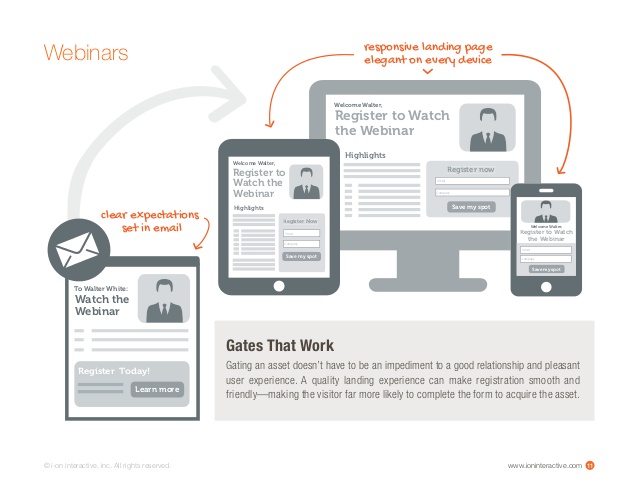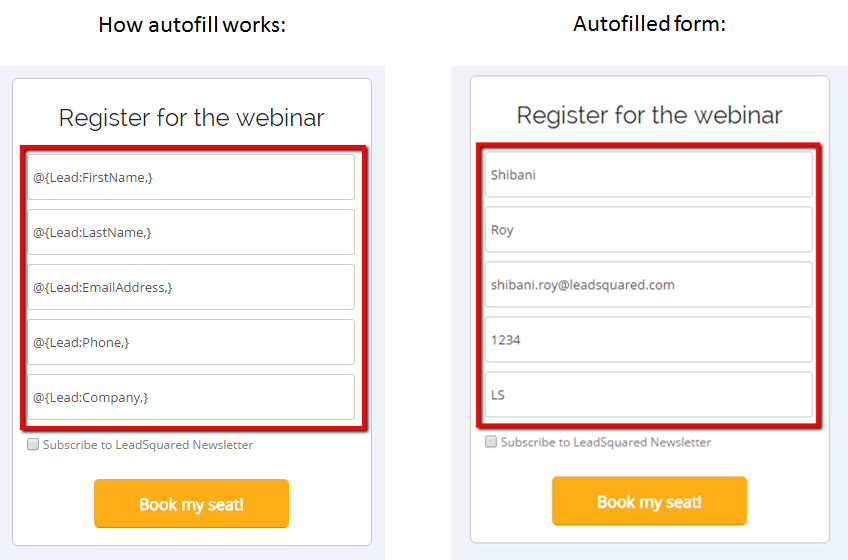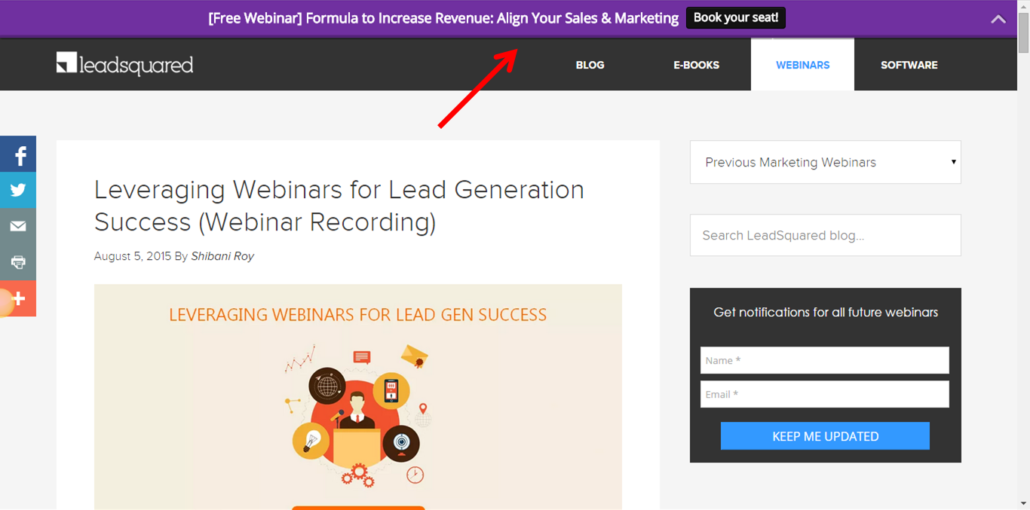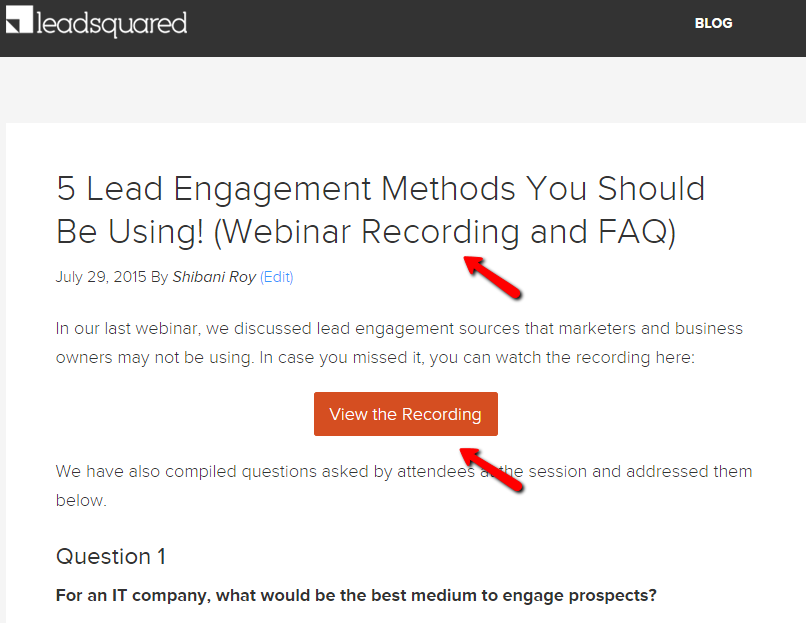In the past couple of years, webinars have really begun to help businesses grow. Here at LeadSquared, we have experimented and tried various things to improve and get the most out of our webinar sessions. Some have already been mentioned in this post from 2014. I’m going to add to that list. Here are 4 webinar best practices that will increase your registrations immediately (and I have proof to back it up)!
Webinar Best Practices: #1 Use responsive landing pages
If you attended our webinar on ‘Responsive Design – Modern’s Marketer’s Holy Grail to Conversion Success‘, you would know why responsive landing pages are important. With the increasing number of people surfing the internet on mobile and tablet devices, it would probably make sense to switch to responsive design.
From the time, we switched to responsive landing pages, our webinar registrations (visitor to lead conversions) have increased. And that in turn has helped increase the number of attendees for our webinars!

Your visitor should be able to register for your webinar without any difficulty and from any device (desktop, laptop or mobile). The idea is to give the visitor a good user experience. A lot of webinar invite pages that are not responsive or mobile-friendly render badly on mobile devices (I am sure you have come across such pages), and that can leave a bad user experience. So get responsive landing pages and implement these webinar best practices!
From the time we started using responsive landing pages, we have a steady turnout (registration to attendee ratio) of about 30% (remember that sometimes our webinar sessions are on specific industries which may not be relevant to one and all – given that, I think it’s pretty decent)! [More stats below]
Webinar Best Practices: #2 Get autofill landing pages
Autofill landing pages have really turned around our webinar registrations. So what are they? Autofill landing pages are landing pages that already have the person’s details filled in, making it very convenient for the lead to register for the webinar/event. We use autofill forms when we send out our webinar email invitations. Here’s an example of how it works (our regular webinar attendees will be familiar with this):

Notice the form and the inputs given in each field, in the first image; if you have a sales and marketing system (like LeadSquared) in place, you would already have those details (lead’s name, number, email id, etc.) in the system. So all you need to do is use those inputs (mentioned in the form above) in your landing page URL, and voila!
Benefit of using autofill forms:
- A lot of people tend to not register for things after seeing a long form that they need to fill – autofill eliminates this and thus, makes the sign-up process more convenient for the user.
- It really saves a lot of time. Let’s say you are out and you get a webinar mail on your mobile phone. You click on the registration link and you are redirected to the landing page. If it’s an autofill form, you can register in seconds. If it isn’t and you are caught up with something else, it’s more likely that you’d decide to register later and then forget about it.
Now, the part where I provide proof: So we analyzed 40 webinars, 20 prior to using responsive and autofill landing pages and 20 after we started using responsive and autofill landing pages for webinar registrations. The analysis you will see below, is an average of
- Landing pages visits
- Landing page conversion rate
- Number of webinar registrants
- Number of attendees
- Turnout percentage
| Average: | |||||
| Stats of 40 webinars: |
Visits |
Conversion Rate |
Registered |
Attended |
Turnout % |
| Before responsive & autofill | 320.9 | 46.19% | 125.65 | 37.4 | 29.72% |
| After responsive & autofill | 319.75 | 55.36% | 134.15 | 39.65 | 30.36% |
The average in case of most, suggests that responsive and autofill landing pages have definitely helped in traffic/visit to lead conversions or webinar registrations. The average webinar landing page conversion rate now stands at 55.36%, that’s an increase of over 19%! I would also like to mention here that a lot of the webinars conducted after we switched to responsive and autofill pages have been on industry-specific topics (like education, real estate, hospitality – where the turnout is generally lower since the topic may not be relevant to everyone), and in spite of that, the overall result has been better. So that’s awesome :)
Webinar Best Practices: #3 Experiment with website top bar
Unlike pop-ups, website top bars don’t really annoy visitors but at the same time, attract their attention (which is what you should aim for). Earlier we used a tool called ‘Hello Bar‘ to promote our webinars on the website. But now LeadSquared has its own Top Bar website widget, making it cost-effective, easier to setup and easier to analyze as you don’t have to keep switching tools for simple analysis and reports.

In our experience, we have seen that having a top bar on our website helped us generate a good number of unique leads. I can’t say the same for our blog but the company website, yes – it definitely helped. Per webinar, we would get at least 4-5 unique webinar registrations from the top bar.
Webinar Best Practices: #4 Send webinar recording & FAQ
Here at LeadSquared, we have been organizing webinars for a while (about 2 years). After every webinar session, we share the webinar recording and the a post summarizing the session with everyone who registered for the webinar. Some of our more loyal webinar attendees will be able to back me up on this. So now they know that even if they can’t attend the session for some reason, they will surely get a recording and the deck used, once the session is over (provided they registered for it). This information is passed on by word of mouth, encouraging all those who are interested, to at least register for it, even if they can’t attend the session.

If your business organizes regular webinars, online events and other engagement activities that involve people signing up or registering for it using landing pages, I’d suggest you implement these webinar best practices soon. It will surely make a difference, and in this case, it will definitely impact your webinar registrations. If you aren’t organizing webinars yet but planning to, this session on Leveraging Webinars for Lead Gen Success might convince you to start sooner than you think.









